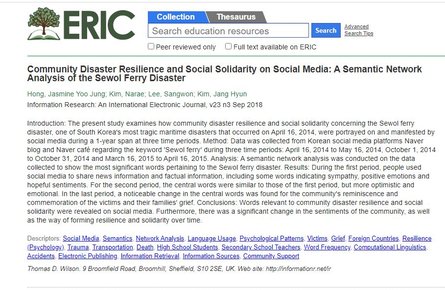
The present study examines how community disaster resilience and social solidarity concerning the Sewol ferry disaster, one of South Korea's most tragic maritime disasters that occurred on April 16, 2014, were portrayed on and manifested by social media during a 1-year span at three time periods. Method: Data was collected from Korean social media platforms Naver blog and Naver café regarding the keyword 'Sewol ferry' during three time periods: April 16, 2014 to May 16, 2014, October 1, 2014 to October 31, 2014 and March 16, 2015 to April 16, 2015. Analysis: A semantic network analysis was conducted on the data collected to show the most significant words pertaining to the Sewol ferry disaster. Results: During the first period, people used social media to share news information and factual information, including some words indicating sympathy, positive emotions and hopeful sentiments. For the second period, the central words were similar to those of the first period, but more optimistic and emotional. In the last period, a noticeable change in the central words was found for the community's reminiscence and commemoration of the victims and their families' grief. Conclusions: Words relevant to community disaster resilience and social solidarity were revealed on social media. Furthermore, there was a significant change in the sentiments of the community, as well as the way of forming resilience and solidarity over time.